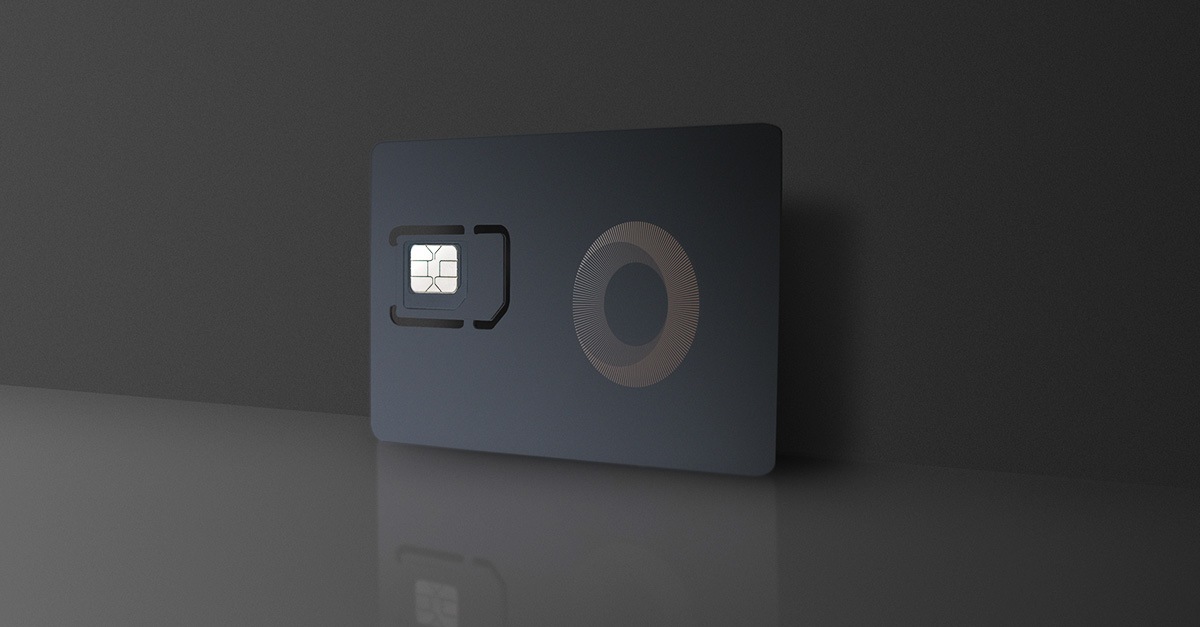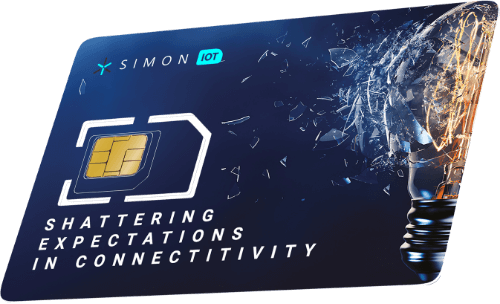Managed IoT Connectivity Platform Simplified Global IoT Connectivity
Managed IoT Connectivity Platform Simplified Global IoT Connectivity
Blog Article
Connectivity Management Platform IoT Evaluating IoT Connectivity Technology Pros and Cons

The world has witnessed a big transformation in the way in which we interact with our residing spaces. Smart homes, geared up with linked units, have risen dramatically in reputation, offering enhanced convenience, security, and energy effectivity. However, attaining seamless integration of all these devices heavily relies on efficient IoT connectivity options.
Various connectivity technologies facilitate communication between units, ensuring that every element of the smart home works harmoniously. Choosing the best IoT connectivity options for smart houses is crucial for creating an environment friendly and responsive environment. These options vary by means of vary, power consumption, and the forms of units they help, allowing customers to tailor their smart house ecosystems to their specific wants.
Wi-Fi is amongst the most generally used connectivity solutions, primarily because of its ubiquitous nature and excessive information transfer rates. Many smart residence units are already designed to attach effortlessly to current Wi-Fi networks. This makes adding new devices comparatively straightforward. Tablets, smartphones, and routers can usually help multiple gadgets simultaneously, making it a handy option for smart residence enthusiasts.
Vodafone Managed IoT Connectivity Platform Pressure on IoT Connectivity Prices
However, Wi-Fi is not with out its challenges. The dependence on a stable internet connection can often lead to performance points, especially with multiple units trying to communicate without delay. Furthermore, the range may be limited relying on the structure of the home. Walls and other obstacles may cause sign degradation, which might hinder the performance of units situated removed from the router.

Zigbee is one other compelling possibility for IoT connectivity in smart properties. This technology helps low-power units, making it suitable for battery-operated sensors and devices. Zigbee creates a mesh community, which means each related device acts as a relay, expanding the vary of connectivity throughout the house. This is particularly beneficial in larger spaces the place traditional Wi-Fi might battle.
IoT Connectivity Companies Enabling Internet of Things Connectivity
Z-Wave provides to the suite of options available for smart houses. It operates on a lower frequency than Wi-Fi, which implies it might possibly higher penetrate partitions and avoid interference from different digital units. Z-Wave is engineered particularly for home automation, permitting various gadgets to interact seamlessly. The low energy consumption additionally aids in battery longevity for units that function on this community.
For functions requiring low data rates but excessive reliability, LoRa (Long Range) supplies a superb different. It is very useful for agricultural or environmental monitoring devices that only require intermittent data transmission. LoRaWAN (Low Power Wide Area Network) allows these gadgets to speak over lengthy distances, making it a perfect solution for expansive properties or smart city applications.
Cellular connectivity serves as another robust answer, primarily for devices that require fixed internet entry but will not be put in near established networks. This ensures that gadgets can ship and obtain data over the web instantly, eliminating reliance on residence Wi-Fi techniques. While perhaps costlier, cellular connectivity presents the good factor about wide-reaching availability, particularly in rural or hard-to-reach areas.
Bluetooth is also a significant participant in the realm of smart house connectivity, significantly for personal devices like fitness trackers, smartwatches, and audio system. Its low energy necessities make it an attractive option for short-range communication. Bluetooth mesh networking enhances the protocol’s functionality, enabling gadgets to speak effectively even when separated by far.
Aws IoT Connectivity Essential Information on IoT Connectivity
Thread is a comparatively newer protocol designed to make official website gadget connectivity less complicated. It additionally helps low-power gadgets in a mesh community configuration. What units Thread apart is its IPv6-based communication, which permits more straightforward integration with internet-based techniques and companies. This adaptability opens the door for future scalability as smart residence anchor technologies continue to evolve. Managed IoT Connectivity Services.
The integration of assorted connectivity protocols is significant for compatibility among gadgets. Many companies have recognized that a single solution won't meet all user wants, leading to multi-protocol methods that may seamlessly change between networks. Such flexibility allows homeowners to customise their smart environments and connect devices whatever the manufacturer.

As consumers increasingly emphasize sustainability, smart properties that facilitate energy-efficient residing have gained traction. IoT connectivity solutions contribute considerably to this pattern. Devices can communicate to optimize energy usage, adjusting heating, cooling, and lighting based mostly on real-time knowledge.
When selecting the right IoT connectivity options for smart properties, customers ought to fastidiously contemplate their particular necessities. Those prioritizing pace may lean in the path of Wi-Fi, whereas people needing to increase the vary of connectivity could favor Zigbee or Z-Wave. Budget, system compatibility, and the potential for future upgrades also play a significant role in decision-making.
Mobile Data Connectivity For IoT Six Major IoT Connectivity Technologies
Ultimately, the most effective IoT connectivity options for smart houses will enhance not only automated comfort but additionally the entire living expertise by incorporating superior know-how into every day routines. These solutions empower owners to handle their environments better and reside more sustainably, simultaneously having fun with the advantages of state-of-the-art connectivity.
In conclusion, with the speedy advancements in expertise, the panorama of smart house connectivity continues to evolve. As extra units enter the market and more homeowners embrace automation, the significance of strong connectivity solutions turns into more and more apparent. Those who make investments time in understanding and implementing these solutions will undoubtedly contribute to creating more clever, environment friendly, and pleasant dwelling areas.
- Various connectivity protocols like Zigbee, Z-Wave, and Wi-Fi cater to totally different smart home gadgets, enhancing interoperability and system communication.
- Mesh networking capabilities enable devices to speak more effectively, expanding protection and decreasing useless zones within bigger properties.
- Low-power wide-area networks (LPWAN) provide energy-efficient options for battery-operated devices, promoting longer operational lifespans.
- The integration of edge computing ensures real-time data processing, decreasing latency and enhancing overall system responsiveness.
- Cloud-based IoT platforms provide in depth information analytics, enabling customers to optimize device utilization and energy savings of their smart homes.
- Security features, such as end-to-end encryption and common firmware updates, are essential for shielding smart residence data from potential threats.
- Dual-band routers can help each 2.4 GHz and 5 GHz connections, offering flexibility and improved efficiency for diverse smart units.
- User-friendly mobile applications improve the management of smart residence devices, enabling seamless interactivity and scheduling functionalities.
- Interoperability standards, similar to Matter, facilitate collaboration between totally different producers, selling seamless cross-device communication.
- 5G expertise promises ultra-low latency and higher bandwidth, potentially revolutionizing smart home experiences with sooner information switch rates.
What are the several varieties of IoT connectivity options for smart homes?undefinedThere are a quantity of IoT connectivity solutions, including Wi-Fi, Zigbee, Z-Wave, Cellular, and LoRa. Each provides totally different benefits in terms of range, pace, energy consumption, and scalability, permitting for tailored solutions primarily based on specific smart residence needs.
How does Wi-Fi examine to Zigbee for smart residence devices?undefinedWi-Fi is faster and broadly used for high-bandwidth applications, while Zigbee is designed for low-power, low-bandwidth tasks, making it best for units that require long battery life. Zigbee additionally supports mesh networking, enhancing range and connectivity amongst units.
Connectivity Management IoT Providers of Cellular IoT Connectivity
What elements should I contemplate when choosing an IoT connectivity solution?undefinedConsider factors like vary, energy consumption, system compatibility, safety features, and the particular wants of your smart house ecosystem. Assess how many devices you plan to attach and their power requirements, ensuring the chosen resolution supports your setup.

Are there security risks related to IoT connectivity solutions for smart homes?undefinedYes, safety dangers include unauthorized entry and information breaches. It’s crucial to decide on options with strong encryption and common updates. Implementing strong passwords, firewalls, and maintaining firmware up to date can considerably enhance your smart home’s safety - Long Range IoT Connectivity.
Connectivity Management Platform IoT M2M Connectivity Solutions in IoT
Can I integrate multiple IoT connectivity options in my smart home?undefinedAbsolutely! Many smart residence techniques help integration across varied protocols, permitting devices using different connectivity options to work collectively seamlessly. This flexibility permits customers to optimize performance and compatibility.
What role does the cloud play in IoT connectivity for smart homes?undefinedThe cloud allows distant administration, information storage, and superior analytics for smart house devices. It facilitates communication between devices and user interfaces, allowing for real-time monitoring and management from wherever by way of internet connections.
IoT Connectivity Issues Types of IoT Connectivity Explained
How can I guarantee compatibility among totally different smart home devices?undefinedCheck for compatibility labels and make certain that devices observe widespread standards like Zigbee or Z-Wave. Research ecosystems, such as Google Home or Amazon Alexa, that assist a variety of units, simplifying integration and control.
What is the means forward for IoT connectivity solutions for smart homes?undefinedThe future is leaning in the path of enhanced interoperability, improved safety protocols, and the rise of 5G know-how. These developments will provide faster speeds, larger device density, and decrease latency, enhancing the overall smart residence experience.
How can I troubleshoot connectivity points in my smart home?undefinedStart by checking the power sources and ensuring devices are within vary of their connectivity hub. Restart routers and devices as needed. Use both app diagnostics or manufacturer support resources for particular troubleshooting steps tailored to the gadgets in question.
Report this page